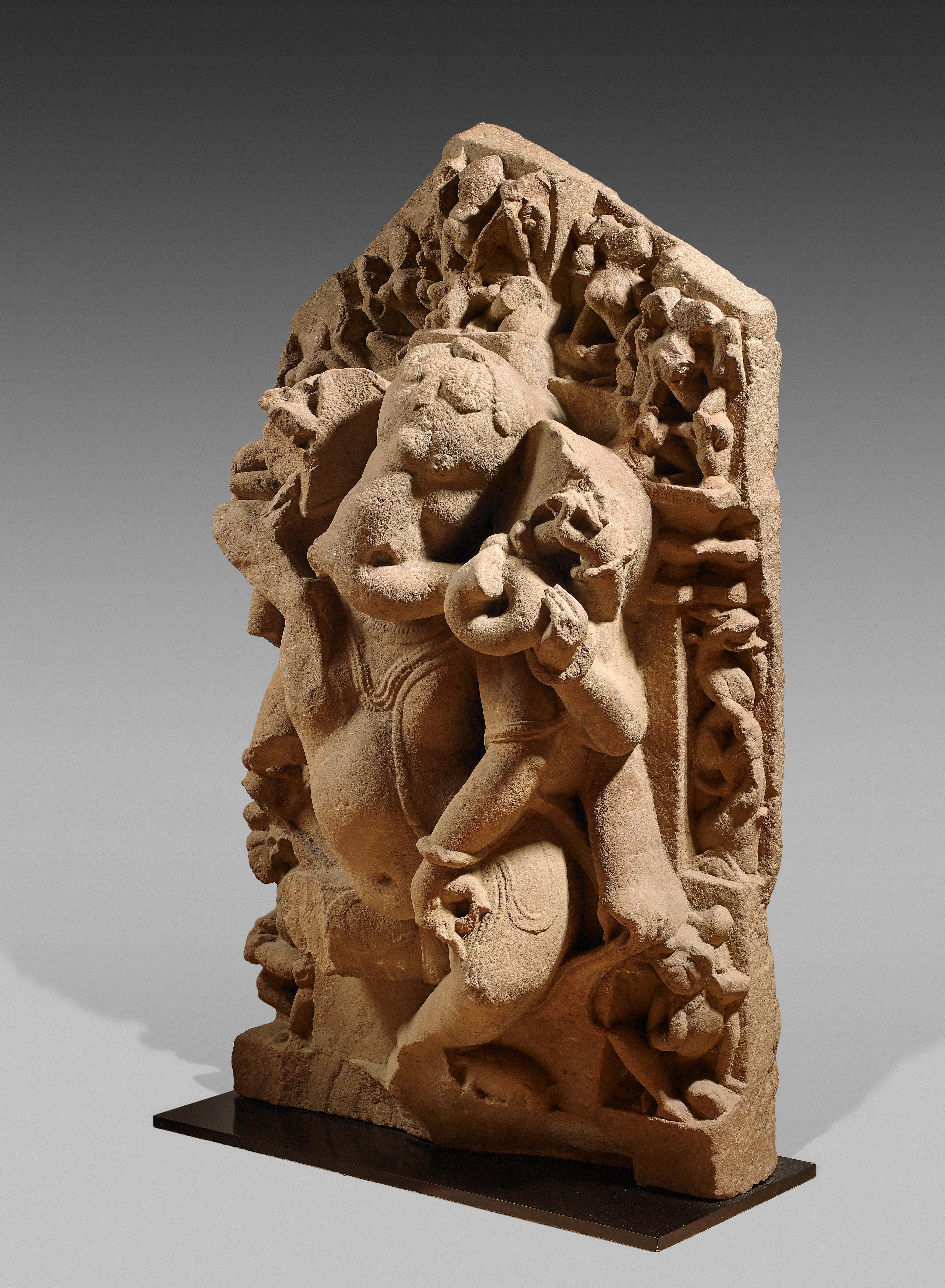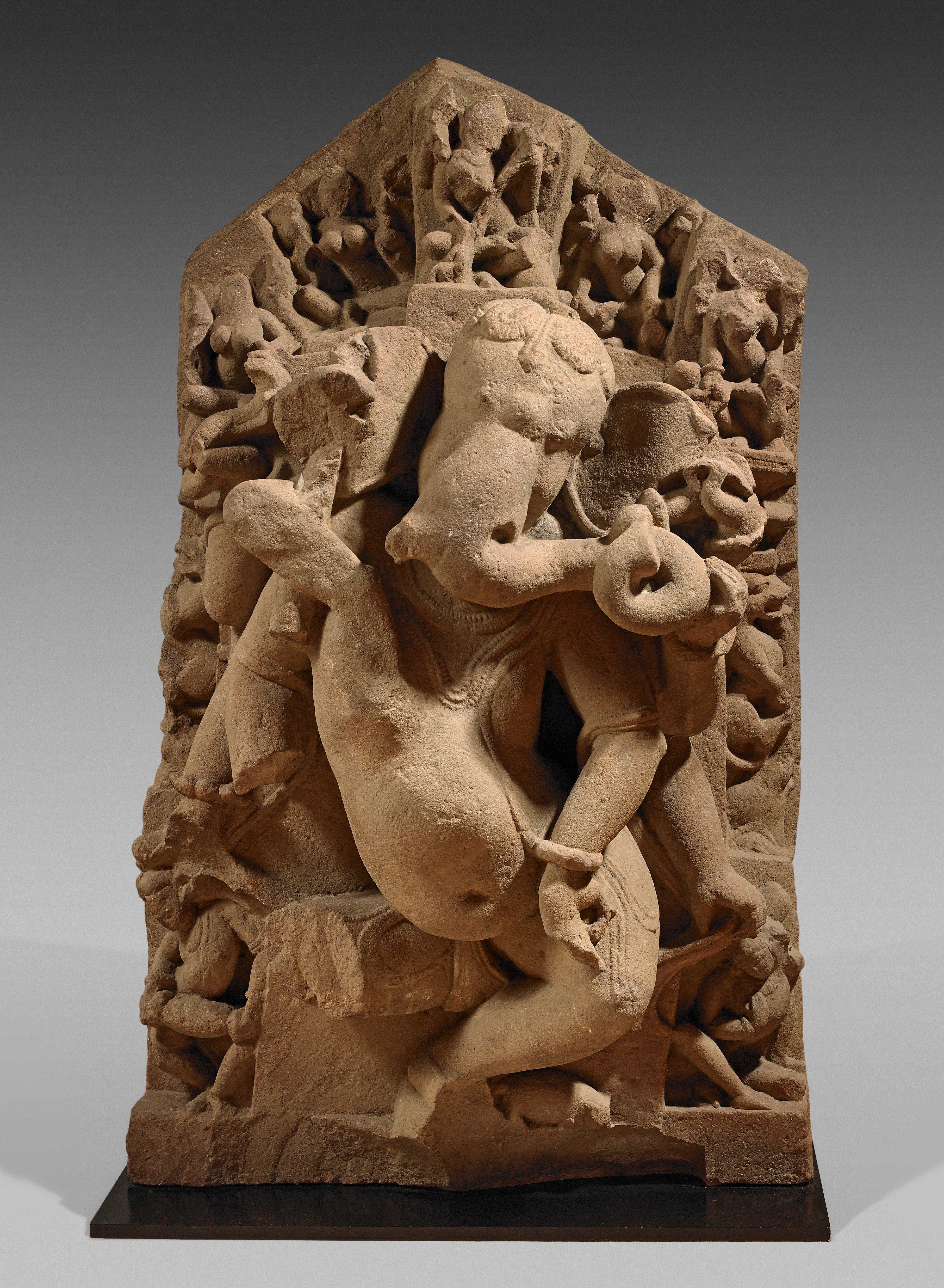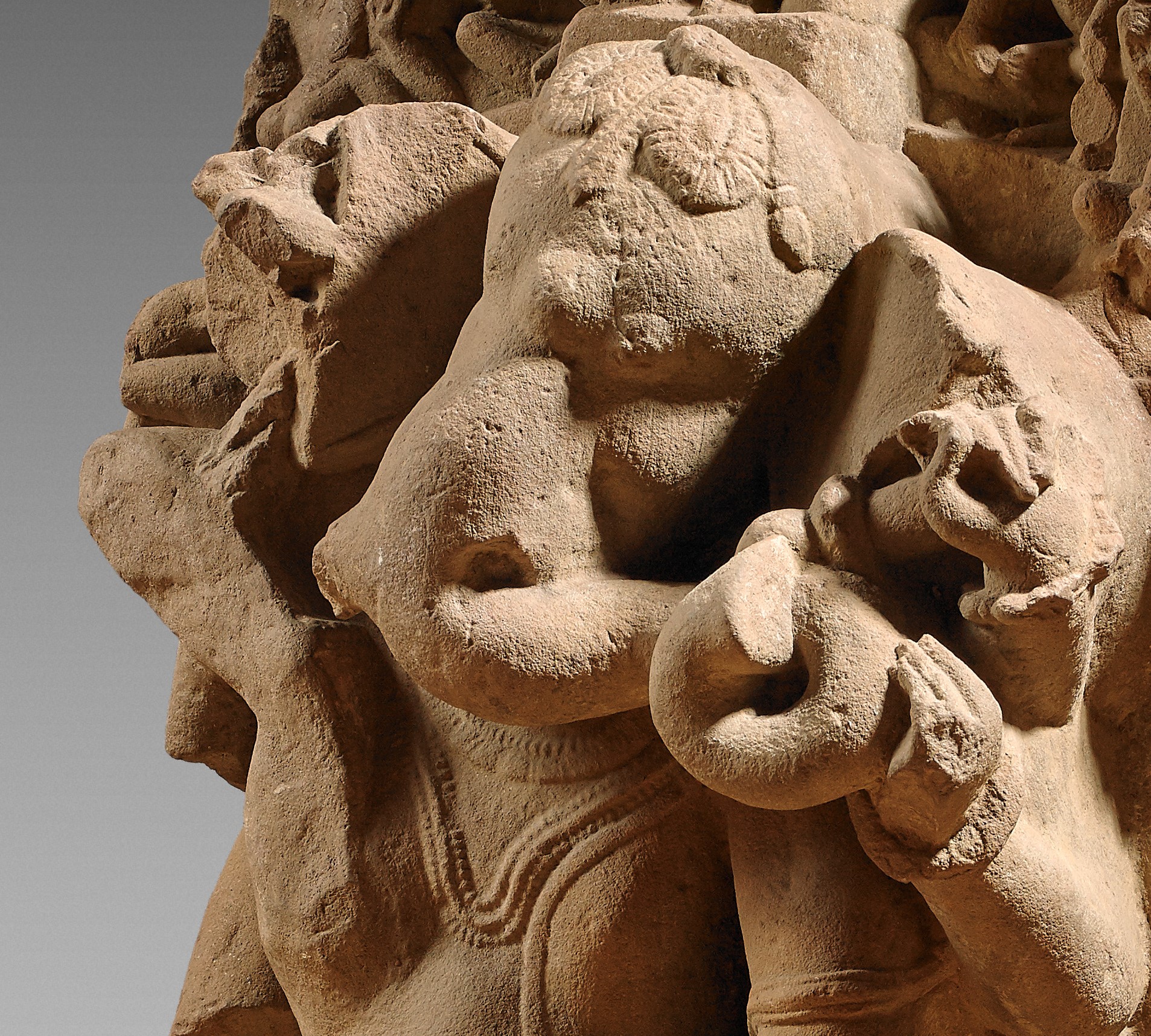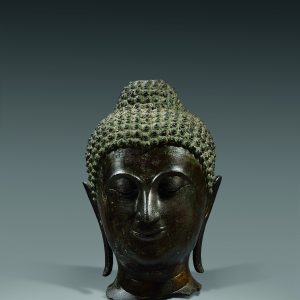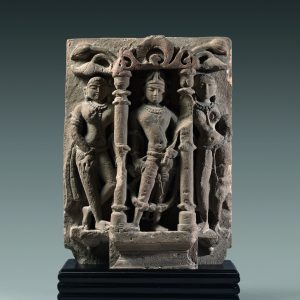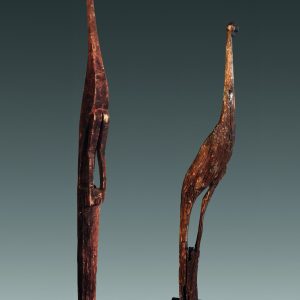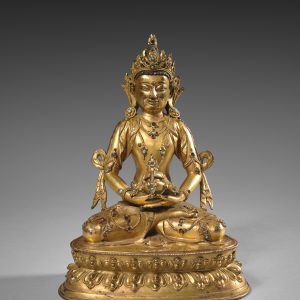Ganeśa
Sandstone
Central India
10th-11th century
H. 100 cm or 39 ½ in
Description
The son of Śiva, this elephant-headed deity is one of the most popular gods in the Hindu pantheon, as can be seen by the great number of replicas throughout the Subcontinent. The animal head is intriguing, and only poorly explained by several legends that arose belatedly (not before the 17th century). According to the Śiva Purāṇa, the goddess Pārvatī, wife of Śiva, had her residence guarded by Vighneśvara, “The King of Obstacles”, which she made out of dust mixed with a bit of her own flesh. When stopped at the entrance to his wife’s chamber, Śiva decapitated the guard. Facing the wrath of his wife, he promised to give him life again, as well as the head of the first creature that came by. Which was an elephant, whose head he used. The composite being was immediately proclaimed the child of the divine couple. Assimilation by Hinduism of a pre-Vedic aboriginal cult, encountered by the Brahmans as this religion was constituted over the centuries preceding the Christian era, is the most probable hypothesis for the origin of the deity. The god of the lower castes, with a great following in the countryside, Ganeśa is also worshiped fervently by most Brahmans, who – among other gods – offer up a prayer to him before every ceremony, because Ganeśa removes obstacles and makes rituals, as well as any human undertaking, run smoothly. He has only one tusk. He broke off the second to transcribe the epic saga of the Mahabharata, which was dictated to him by the sage Vyāsa. “Lord of the gaṇa”, he is the head of a troop of deformed dwarf musicians (gaṇa), singing and dancing to entertain Śiva and Pārvatī, especially after their wedding, when the young bride lies down next to her divine lover in his home on Mount Kailāsa in the Himalayas. That is why many sculptures, like this one, show Ganeśa as if he were dancing. As the right hands have been broken off, it’s impossible to certify his attributes. The first left hand might be holding between the thumb and index finger a round sweet which the god loved. The second left hand holds the cord, which is frequently seen in the iconography of the god who arose in the South. Ganeśa also appears in another context. He accompanies the group of seven Mothers (Mātṛkā), fierce Hindu goddesses linked with the protection of young children. On this stele, they surround the elephant-god. Their images are too highly eroded to make it possible to identify them. It is thought that Maheśvarī (Mahișamardinī), slaying the buffalo-demon with her trident, is at the top of the stele just above the god’s head. The simplicity of the jewelry would tend to date the work from an early date in spite of the undeniable dynamism of the movement, the piece’s highlight.
Provenance: Private collection, England, since the 1990s.
Art Loss Register Certificat ref. S00109291.

